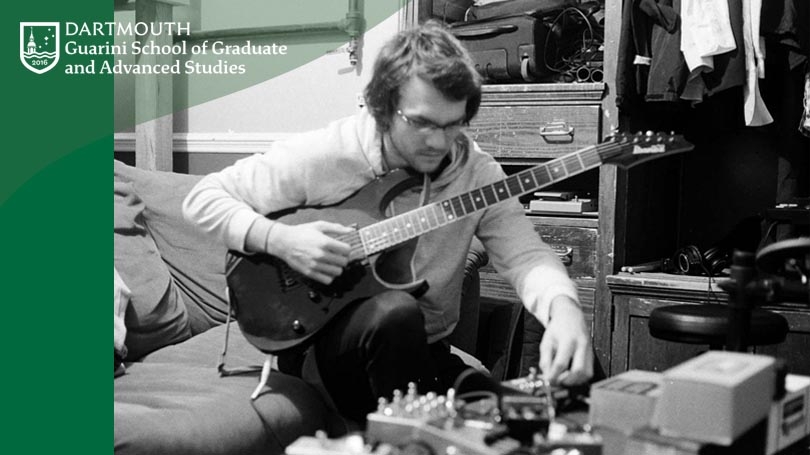Have you ever had a song stuck in your head? Or noticed the sound of a voice when reading silently? There exists a wonderfully rich world of sound that occur in our "mind's ear". These sounds, when grouped together, are often described as imagined sounds as they don't occur as waves in the air around us. But rather, these sounds originate from and are perceived in the same place, our brains.
The study of imagined sound is a relatively new, but very exciting field. Imagined sounds have historically been pathologized and often had an unnecessarily negative stigma associated with them. There are many varied experiences of imagined sound, and my research aims to understand these phenomena on a deeper level.
I am a Masters student in Dartmouth's Digital Musics program. My thesis is a multifaceted, inter-disciplinary investigation into imagined sound. The first segment of the investigation is a collaborative fMRI study in which the brains of trained musicians are scanned while they are imagining different notes. My advisor, Prof. Michael Casey, and I are working with a small team of researchers to build an algorithm that looks at the brain scans and identifies the note the subject was imagining. It sounds like something out of Black Mirror, but we are hoping it is a first step towards a deeper understanding of imagined sound and as a speculative gesture to future technologies that might grant access to imagined phenomena.
The second comprises of three creative works that all deal with imagined sound. The first work is a data sonification piece in which the results of our brain scan prediction algorithm are made visible and audible. The next piece is a song which makes use of the popular internet phenomena, 'GIFs you can hear'. I combined traditional Western pop song elements with a selection of silent GIFs that elicit imagined sounds. These GIFs were cataloged from Reddit and Imgur pages that served as an open repository. The final work is a medium-length composition in which the audience is cued to actively imagine sounds in relation to an acoustic composition. The piece asks the audience to imagine sounds close to their heart and to manipulate and shape them in their mind.
The final segment of the investigation is a series of interviews with people about their experiences of imagined sound. I have been fortunate to be able to speak to people from various continents with differing relations to sounds. These interviews have included a foley artist, a conductor, and several comic book enthusiasts and have provided invaluable information about various lived experiences of imagined sound.
The generous Alumni Research Award has allowed me to connect with people from various sound backgrounds and ability statuses to discuss their experiences of imagined sound. It also allowed us to scan additional subjects in the fMRI portion of the investigation. I would thank the alumni for their generous support of research at Dartmouth and for allowing me to make these important connections.
